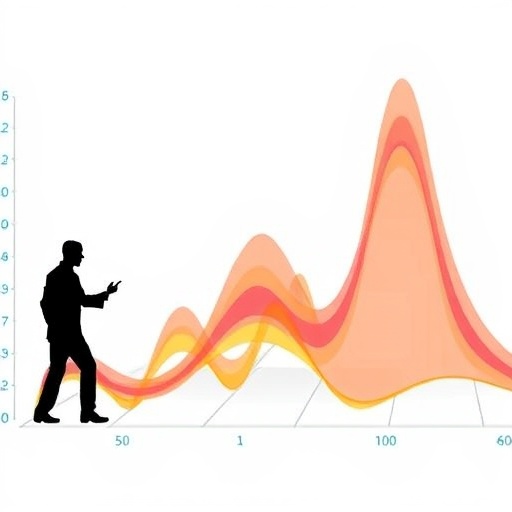In the rapidly evolving landscape of medical research, precision and efficiency in predictive modeling remain pivotal yet challenging goals. Machine learning has emerged as a transformative tool in this domain, enabling researchers to derive critical insights from complex datasets. However, existing frameworks for model building within the widely used R programming environment have exhibited limitations, notably in integrating ensemble learning techniques and robustly managing imbalanced or large-scale datasets. Addressing these gaps, researchers Shanjie Luan from Shandong University and Ximing Wang from South China University of Technology have introduced a groundbreaking R package named E2E (easy to ensemble), engineered to democratize the ensemble modeling process for medical practitioners and researchers.
The E2E package stands out by offering a comprehensive arsenal of ensemble methods, focusing on simplicity and flexibility. Unlike traditional machine learning packages such as tidymodels and mlr3, which primarily concentrate on single-model frameworks or provide limited ensemble capabilities, E2E integrates advanced ensemble strategies including bagging, stacking, and voting. These techniques synthesise multiple base learners into a unified predictive model, boosting accuracy, diminishing variance, and enhancing model stability — a crucial advantage when dealing with real-world medical data fraught with noise and heterogeneity.
At the core of E2E’s innovation is its suite of 18 embedded models, comprising 12 diagnostic and 6 prognostic base models. This extensive collection spans various algorithmic classes, empowering users to tailor their model ensembles to specific research questions and data characteristics. Furthermore, the package’s architecture is extensible, allowing researchers the freedom to incorporate their own custom models seamlessly. This adaptability is indispensable for the diverse and rapidly developing field of biomedical analytics, where new predictive algorithms continually emerge.
To rigorously validate E2E’s utility, the creators conducted empirical tests on two highly relevant biomedical datasets: the Cancer Genome Atlas breast cancer diagnostic dataset (TCGA-BRCA) and the China Health and Retirement Longitudinal Study (CHARLS), which captures multifaceted health and aging data of a large population. These benchmarks underline the package’s capacity to handle vastly different data types and study designs, demonstrating broad applicability across diagnostic and prognostic contexts.
One remarkable achievement of E2E was its performance on the notoriously imbalanced TCGA-BRCA dataset, which poses significant challenges for standard modeling approaches. Here, E2E’s specialized imbalance handling capabilities delivered a near-perfect Area Under the Receiver Operating Characteristic Curve (AUROC) of 0.9986 alongside an equally impressive Area Under the Precision-Recall Curve (AUPRC) of 0.9999 on the test set. These metrics not only validate the package’s predictive prowess but position it on par with mature Python-based algorithms regularly considered state-of-the-art in machine learning.
Extending beyond cancer diagnostics, E2E also excelled in prognosis prediction on the CHARLS dataset. Achieving an AUROC of 0.7414 in this context, the package outperformed competing methods, illustrating its robustness and reliability in longitudinal health studies. Moreover, the ensemble bagging approach applied to prognostic tasks in TCGA data yielded a concordance index (C-index) of 0.6742, surpassing all individual base models and comparative ensemble techniques evaluated by the research team.
While Python traditionally enjoys a reputation for faster computation times and a broader suite of machine learning libraries, E2E effectively narrows this gap within the R ecosystem. It combines an intuitive interface with powerful computational techniques, making it accessible for medical researchers who primarily operate in R without sacrificing model integrity or interpretability. The package’s user-friendly design fosters rapid prototyping and facilitates iterative model refinement, a boon for researchers navigating complex clinical data.
An important feature of E2E is its incorporation of SHAP (SHapley Additive exPlanations) for model interpretability. Although the implementation currently offers a rough approximation relative to some more mature tools, it substantially advances transparency by helping users identify which variables most contribute to predictions. This interpretability is essential to foster clinician trust and compliance with regulatory frameworks that demand understanding of algorithmic decision-making, especially in high-stakes medical applications.
Beyond functionality, E2E’s development underscores a commitment to open science. The package and its full source code have been made freely available via GitHub and CRAN, promoting wide accessibility and collaborative improvement. This open approach enables researchers worldwide to adopt, scrutinize, and enhance the tool, thereby accelerating the pace of ensemble learning innovation in biomedical research.
Crucially, medical researchers using E2E are encouraged to cite the foundational paper by Luan and Wang, published in the journal Med Research. This ensures scholarly recognition and facilitates traceability of methodological advancements, linking applied projects back to their conceptual origins. The paper also details the theoretical underpinnings and technical evaluations that substantiate E2E’s advantages, providing a comprehensive resource for users.
Looking ahead, E2E’s extensible framework opens possibilities for incorporating emerging ensemble methodologies and integrating with other R-based data science pipelines. As large-scale biomedical datasets grow increasingly complex and multi-dimensional, tools like E2E will be instrumental in translating data complexity into actionable clinical insights. Its balance of sophistication, ease of use, and transparency sets a new standard for accessible machine learning in medical research.
By bridging the divide between advanced ensemble algorithms and practical usability within the R community, E2E is poised to become a cornerstone tool for medical data scientists. Its demonstrable ability to tackle data imbalance and optimize prognostic and diagnostic performance heralds a new era of informed, data-driven healthcare decisions that can potentially improve patient outcomes globally.
Researchers interested in ensemble learning are thus presented with a powerful, adaptable resource that brings the advantages of advanced machine learning methods within easier reach than ever before. With rapidly evolving demands in healthcare analytics, E2E exemplifies how computational innovation tangibly accelerates biomedical discovery and clinical application, offering a glimpse into the future of precision medicine.
Subject of Research: People
Article Title: E2E: An R Package for Easy-to-Build Ensemble Models
News Publication Date: 19-Sep-2025
Web References:
DOI Link
References:
Luan, S. and Wang, X. (2025), E2E: An R Package for Easy-to-Build Ensemble Models. Med Research.
Image Credits: Shanjie Luan
Keywords: Bioinformatics, Life sciences




